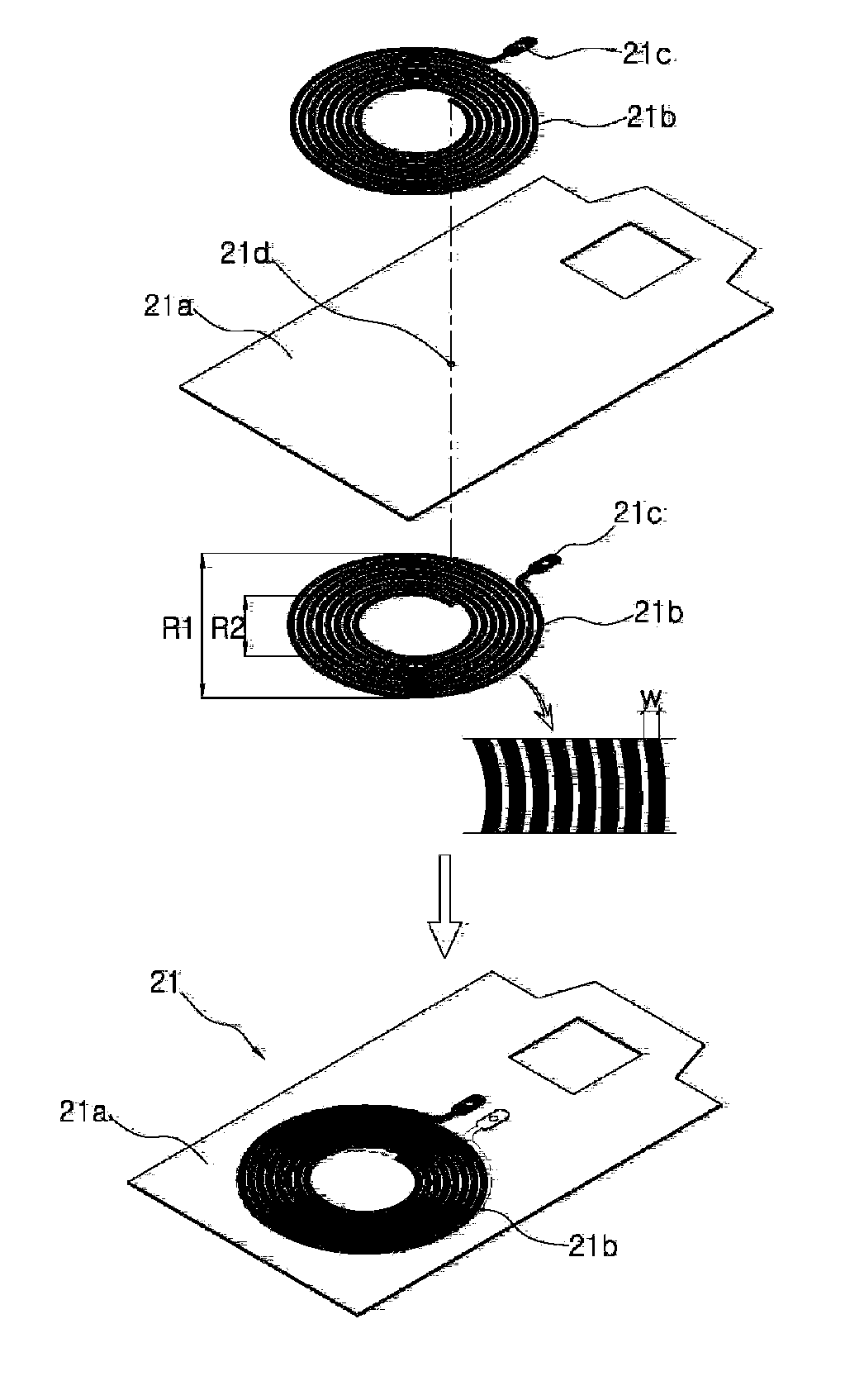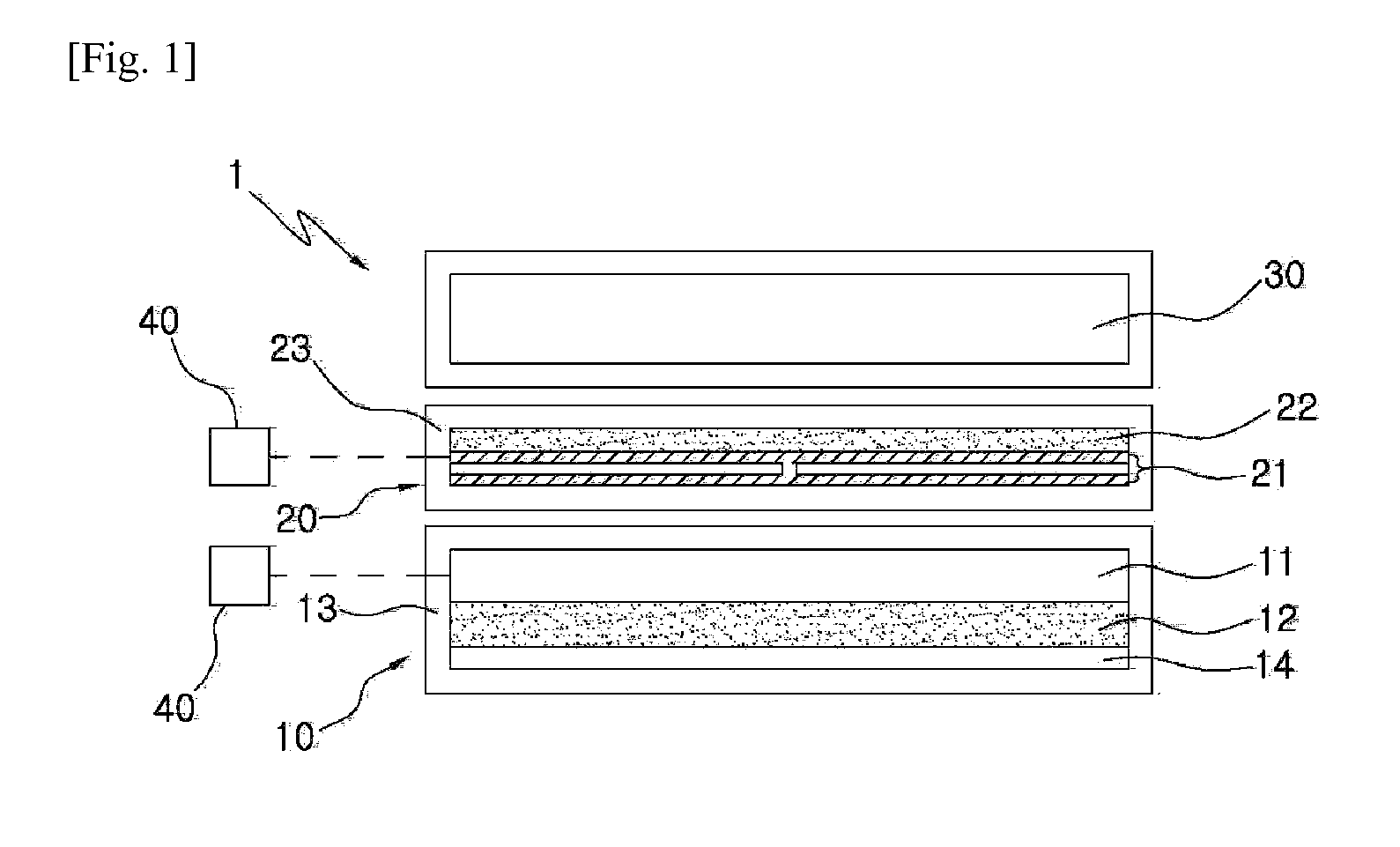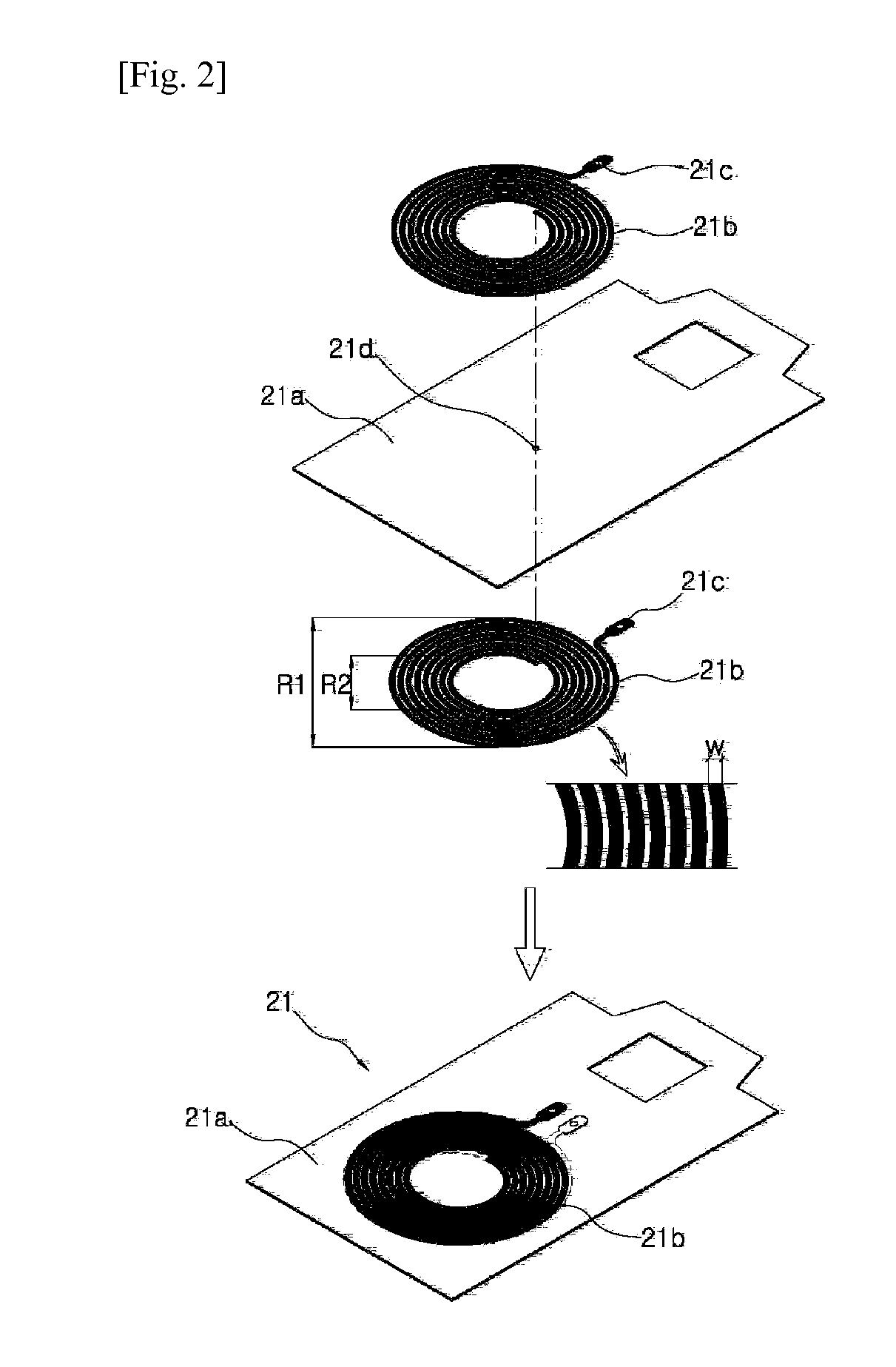Contactless charging system and contactless charging method
a charging system and contactless technology, applied in electromagnetic wave systems, transportation and packaging, sustainable buildings, etc., can solve the problems of insufficient transfer of the electromagnetic field formed in the primary coil, affecting product quality, and increasing the price of products, so as to reduce energy waste by unnecessary power consumption, high charging efficiency, and high charging efficiency
- Summary
- Abstract
- Description
- Claims
- Application Information
AI Technical Summary
Benefits of technology
Problems solved by technology
Method used
Image
Examples
Embodiment Construction
Technical Problem
[0035]An object of the present invention is to an electromagnetic induction type contactless charging system which outputs charging efficiency of a battery to enable a user to know the charging efficiency, a user is induced to control the position of a secondary coil relative to a primary coil to a position having higher charging efficiency to charge the battery with higher charging efficiency, thereby reducing unnecessary power consumption and reducing heat emission generated during a charging process.
[0036]Another object of the present invention is to minimize a problem of the heat emission which may occur during the charging process in the electromagnetic induction type contactless charging system.
Technical Solution
[0037]According to the present invention, provided is a contactless charging system.
[0038]The contactless charging system according to the present invention includes a transmitting unit having a primary coil and a receiving unit having a secondary coil...
PUM
 Login to View More
Login to View More Abstract
Description
Claims
Application Information
 Login to View More
Login to View More - R&D
- Intellectual Property
- Life Sciences
- Materials
- Tech Scout
- Unparalleled Data Quality
- Higher Quality Content
- 60% Fewer Hallucinations
Browse by: Latest US Patents, China's latest patents, Technical Efficacy Thesaurus, Application Domain, Technology Topic, Popular Technical Reports.
© 2025 PatSnap. All rights reserved.Legal|Privacy policy|Modern Slavery Act Transparency Statement|Sitemap|About US| Contact US: help@patsnap.com



